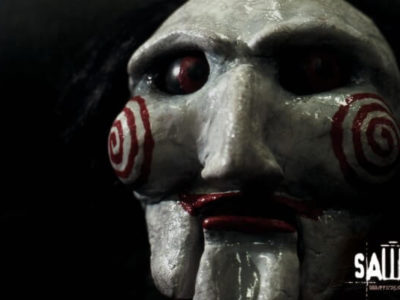Boo!
Did I scare you? Probably not.
Still, our generation loves being scared. We actively seek out fear at theme parks, in the introductions of College Magazine articles and with thrill-filled experiences like skydiving and hang gliding. Around October especially (the spookiest of months), we hunt down fear in film.
Love them or hate them, horror films are a staple of the Halloween season. From the oldie-but-goodies like Dracula, Godzilla and Hitchcock’s suspense masterpiece The Birds to modern marvels of terror and gore like The Ring or the Saw series, horror clearly spans a significant range both in time and in style.
Dr. Richard A. Blake S.J. is a professor of film studies at Boston College—yes, a Jesuit film buff—and he has been studying and writing about film for more than 50 years. At this point, he’s seen it all. He provided some insight into how horror has become the blood-and-guts-fest that it is today.
The horror genre that we all know, love and devour voraciously around October, didn’t get its start with slasher-style violence. Its historical roots go back to the beginning of film with the era of German Expressionism and silent movies. These were filled with monsters—the kind that don’t scare us all too much these days—but were aided with some quality soundtracks.
These flicks started silent, but didn’t stay quiet for long. The introduction of sound to film gave horror a new sense to tingle. “When sound came in the genre had a transition, because now you can have the eerie sounds: creaking doors, scratching trees, the strange, creepy voices of these monsters,” Blake said. It’s hard to imagine a horror movie without at least one ear-piercing scream, and new technology made it all possible.
Where did all the gore of modern films come from, you ask? It certainly didn’t get its graphic start in Dracula. “Surprisingly, what really caused a big break were westerns. Older westerns would show a duel—one man would get shot and he’d double over holding his stomach, but you wouldn’t see much,” Blake said. “But now, they’re machine-gunning people: You have body parts flying around, they’re shooting into crowds of people and women and children are screaming everywhere.”
This is a far cry from John Wayne’s famous western classics, but flying body parts sounds a bit more like modern horror to us. “I’d really stress the advancements in technology and special effects. It opened up the possibility for all this gore and blood on the screen,” Blake said. “Sick, sick stuff.” I agree.
Technology has helped create this shift toward intense gore, but so has the audience’s desires. Could you imagine a 13-year-old boy today—accustomed to the graphic violence of video games—sitting down and cringing in fear at the jerky movements of Godzilla crashing through the city or screaming at the lisping drawl of Dracula? “The audience now isn’t looking for that kind of thing. Any subtlety or off-camera action—or the suspense of a Hitchcock film—isn’t appealing anymore,” Blake said.
Audiences don’t want nuance; now they’re looking for a level of overt violence that, luckily, modern technologies make possible. With the proper sound and CGI techniques, any run-of-the-mill film can be made into a masterpiece of horrific proportions.
So don’t hold your breath for damsels and monsters anytime soon. We’re in the era of gore.



















